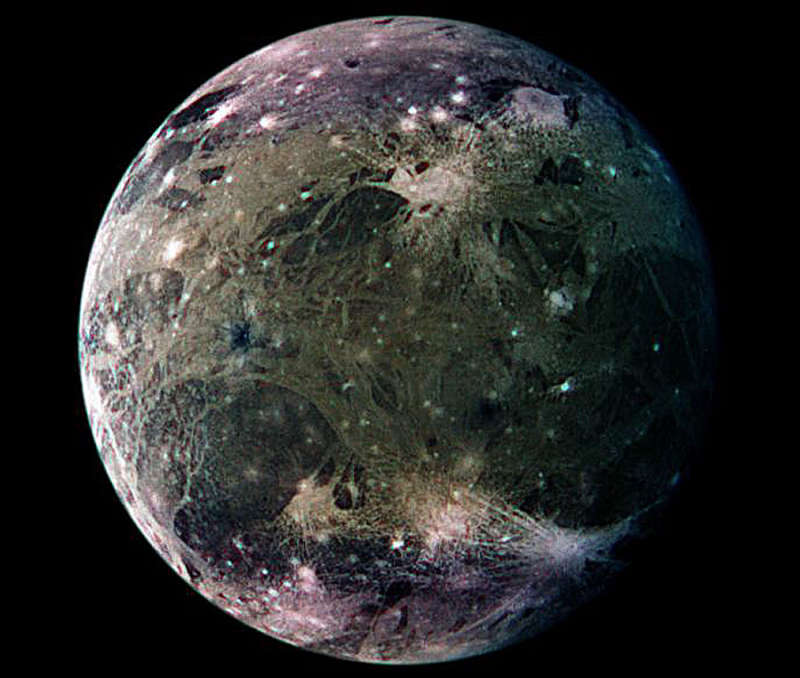Explanation: What does the largest moon in the Solar System look like? Ganymede, larger than even Mercury and Pluto, has a surface speckled with bright young craters overlying a mixture of older, darker, more cratered terrain laced with grooves and ridges. Like Earth's Moon, Ganymede keeps the same face towards its central planet, in this case Jupiter. In this historic and detailed image mosaic taken by the Galileo spacecraft that orbited Jupiter from 1995 to 2003, the colors of this planet-sized moon have been enhanced to increase surface contrasts. The violet shades extending from the top and bottom are likely due to frost particles in Ganymede's polar regions. Possible future missions to Jupiter are being proposed that can search Europa and Ganymede for deep oceans that may harbor elements thought important for supporting life.
1999 2000 2001 2002 2003 2004 2005 2006 2007 2008 2009 2010 2011 2012 2013 2014 2015 2016 2017 2018 2019 2020 2021 2022 2023 2024 2025 |
Yanvar' Fevral' Mart Aprel' Mai Iyun' Iyul' Avgust Sentyabr' Oktyabr' Noyabr' Dekabr' |
NASA Web Site Statements, Warnings, and Disclaimers
NASA Official: Jay Norris. Specific rights apply.
A service of: LHEA at NASA / GSFC
& Michigan Tech. U.
|
Publikacii s klyuchevymi slovami:
Ganymede - Jupiter - galileevy sputniki - Ganimed
Publikacii so slovami: Ganymede - Jupiter - galileevy sputniki - Ganimed | |
Sm. takzhe:
Vse publikacii na tu zhe temu >> | |
